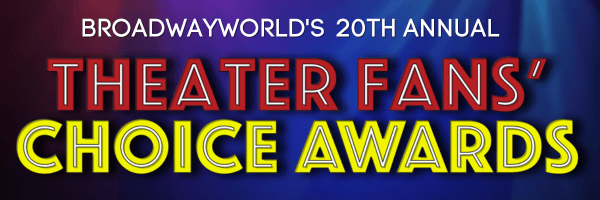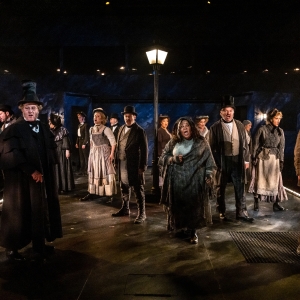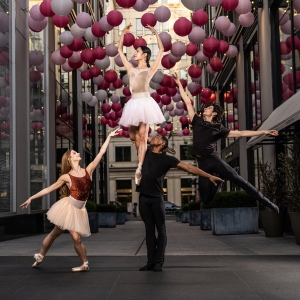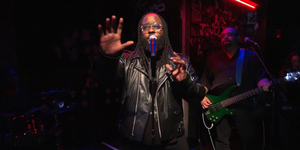Review: THE CRUCIBLE at Eisenhower Theater
Brilliant American choreographer adapts Miller's play for the Scottish Ballet @ the Kennedy Center.

Choreographer Helen Pickett does in her ballet The Crucible just exactly what Arthur Miller attempted in his 1953 play, her source. Both try to make a new language to express the Salem witch trials of 1692 because those events were too extraordinary for regular English or garden-variety ballet. That she obtains more success than he did casts no shade--in order for poor old language to make impact, writers have to use very large quantities of, um, words.
With the swiftness of physical action in her toolkit and the fine dancers of the Scottish ballet at her disposal, Pickett can and does cut to the emotional chase of this enormous story of how religious fundamentalism operates to ruin peoples' lives. The ballet The Crucible does what Miller's play never quite could; it lifts the love story of John and Elizabeth Proctor out of the Puritan mud and gives it more weight than Miller managed to, concerned as he was with the then-current successor to the Salem witch-hunt, HUAC and the Army-McCarthy hearings (during which Roy Cohn, one of 45's trainers, helped prosecutors and probably picked up that hyphenate which still haunts our country).
Don't think for a minute that Pickett's is some foreign take; she's from San Diego and trained with the San Francisco Ballet inherited from Lew Christensen by Helgi Tomasson. She just figures since love conquers all except Puritan fanaticism, she ought to shine a light on the love before it gets snuffed.
Marge Hendrick and Evan Loudon dance the Proctors who have character-driven and eloquent pas de deux in both acts of the hour and 45 minute piece. Hendrick's powerful back devoutly evokes her Puritan dedication so that when its strength relaxes to curve around her husband's body in forgiveness, the bond this couple keeps becomes visible. Loudon, a splendid partner, also has much to do alone as he defends his honor and his name, tries to help his fellow citizens, and struggles with Abigail.
Pickett's dancers must act as much as they dance; Loudon changes constantly, revealing the many facets of John Proctor. "It were a cold house I kept," says Elizabeth to John late in Miller's play; but Pickett wants audiences to realize both that women often over-criticize themselves and that, despite its low points, this was a loving marriage.
Rishan Benjamin vividly dances Tituba, the enslaved woman who unwittingly triggers part of the Salem crisis by sharing the African dances which are a natural part of her culture with the girls of Salem whose unnatural culture believes that to dance is to sin. Claire Souet's expressive portrayal of Abigail would seem evil if the girl were not clearly struggling psychologically. That Pickett knows movement to show this is just one more example of her genius. And Jerome Anthony Barnes, dancing Judge Danforth, scares all the Crucible characters and surely the audience too with his panther-like leaps that send his judicial robes flaring behind him like the miscegenation of a sail and a bat's wings.
In the role of Reverend Parris, Salem's minister, Thomas Edwards leads the skilled ensemble in a worship service: the coup de theatre of this production. Pickett has devised a movement drill for the congregation that summarizes their fervor, their regimented belief system, their repressed spirits, their fear of God. This absolutely brilliant scene, a visual précis of Jonathan Edwards' sermon "Sinners in the hands of an angry God," reverberates throughout the duration of Pickett's The Crucible, providing the emotionally disturbing, internal, non-verbal answer to the question, 'What is wrong with these people?'
Emma Kingsbury, Costume Designer, made Danforth's clever coat, its rear skirt in layers in order to create volume for the character without the length that could impede the dancer. The women's garments are appropriately plain in shape and muted in color; the bodices satisfy the Puritan shame and fear of nature by making every woman be shaped the same from the neck to the waist.
The clerical garb on many of the men constantly evokes Salem's theocracy. David Finn designed the lights that enable frequent shadow--literally true in 1692 and eternally metaphorical in The Crucible. (And Pickett punctuates the playfulness of Abigail's girl group with their use of shadow puppets.) Together, he and Kingsbury designed the excellent set with its giant mullioned window serving for scenes inside homes and a charming and colorful forest for Tituba and the young women to dance in. The dancers contribute runic graffiti onto the grey walls of Salem's buildings, perhaps different at each performance.
Peter Salem's (no irony intended) score sometimes enhances The Crucible. Light string groupings and a reed or two suit the Proctor's duets and Mary Warren's tormented solo (danced with spare intensity by Roseanna Leney), and Salem accompanies Tituba's energetic outdoor dance with a kalimba, the centuries-old west African instrument somehow now called a "thumb piano."
But the instruments are amplified which flattens their sound and enables extreme volume. If the purpose of loud music is to tell an audience, "it's tense now, so get tense," that disrespects the customers while causing aural pain and distracting from Pickett and the dancers. PS The Kennedy Center Opera House Orchestra don't ordinarily have trouble being heard without microphones.
When the clerics and the judges establish the courtroom in The Crucible, Pickett makes moves for their upper torsos, heads, necks that somehow recalled those search dogs that Jerome Robbins choreographically dispatched to hunt down Topsy in The King and I. And then when the girls begin to hallucinate during the trial, Pickett's choreography forms them sideways, then down, ankle-length skirts part of the image: there was Martha Graham's Primitive Mysteries.
The spines of the ensemble often look like those of that family in Agnes De Mille's Fall River Legend. And when Abigail, Mary Warren, and the other girls stand in a row finding the hands next to them before sitting on the courtroom bench, Robbins' Antique Epigraphs somehow came to mind. Helen Pickett's choreography does not look like anyone else's, so how did she do that?! To figure it out, the Scottish Ballet's KC engagement runs through May 28. Don't feel obliged to read or re-read Miller's play before attending; this is what the internet is for--finding a brief plot summary. Or fugeddaboutit and just let Pickett's images and the wonderful dancers take you back to 1692, 1953, and yesterday, when we all still experience the reactionary influence those pilgrims stuck us with here in 2023.
(Photo by Andy Ross)
Videos
![#repshow# in #getregions.name[i]#](https://cloudimages.broadwayworld.com/regionalshows/ndF8C60046-73BF-45C3-B401A54B03E34C2B.jpg) |
Sondheim Tribute Revue Congregation Har Shalom (6/04-6/04) |
|
![#repshow# in #getregions.name[i]#](https://cloudimages.broadwayworld.com/upload13/2236364/defaultshowfinal.png) |
Joe Hisaishi Symphonic Concert Music from the Studio Ghibli Films of Hayao Miyazaki Wolf Trap (7/14-7/15) |
|
![#repshow# in #getregions.name[i]#](https://cloudimages.broadwayworld.com/regionalshows/ndE9186ECD-FF1B-4FCF-A9AB9879D5DFDB5F.jpg) |
Shear Madness Kennedy Center (10/04-10/01) |
|
![#repshow# in #getregions.name[i]#](https://cloudimages.broadwayworld.com/regionalshows/ndED4EB13D-6CA5-4331-82E9EB0A24F7EE42.jpg) |
Joseph and the Amazing Technicolor Dreamcoat Riverside Center for the Performing Arts (5/17-7/09) |
|
![#repshow# in #getregions.name[i]#](https://cloudimages.broadwayworld.com/regionalshows/nd5CBD2C6A-0F8D-483C-A8A488F13582B6D6.jpg) |
Good Bones Studio Theatre (5/10-6/18) |
|
![#repshow# in #getregions.name[i]#](https://cloudimages.broadwayworld.com/upload13/2236364/defaultshowfinal.png) |
Star Wars: Return of the Jedi in Concert | National Symphony Orchestra Wolf Trap (7/08-7/08) |
|
![#repshow# in #getregions.name[i]#](https://cloudimages.broadwayworld.com/regionalshows/ndC0AEDB4D-F8B8-46DE-8C768E5587DF184E.jpg) |
Victorian Lyric Opera Company presents “H.M.S. Pinafore” F. Scott Fitzgerald Theatre (6/09-6/18) |
|
![#repshow# in #getregions.name[i]#](https://cloudimages.broadwayworld.com/regionalshows/ndCEE06D78-41BC-4FBB-BB031070CD1BEDFE.jpg) |
Rockville Musical Theater presents "Into the Woods F. Scott Fitzgerald Theatre (6/30-7/16) |
|
![#repshow# in #getregions.name[i]#](https://cloudimages.broadwayworld.com/upload13/2236364/defaultshowfinal.png) |
NSO: Dispatch Filene Center at Wolf Trap (7/21-7/21) |
|
![#repshow# in #getregions.name[i]#](https://cloudimages.broadwayworld.com/regionalshows/nd8108CB2D-0FB3-4823-AC4BB7838F0C39B2.jpg) |
Passing Strange Signature Theatre (4/25-6/18) |
|
| VIEW ALL SHOWS ADD A SHOW | ||
Recommended For You














 Video: Watch the Trailer for PASSING STRANGE at Signature Theatre
Video: Watch the Trailer for PASSING STRANGE at Signature Theatre


